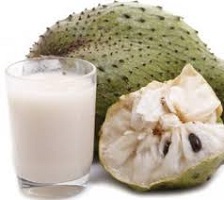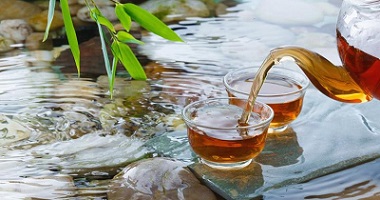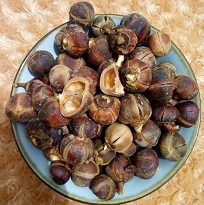How to eat Monkey Kola – Health Benefits
How to eat Monkey Kola – What is a monkey kola? Let’s watch the video first, for a better understanding –
Cola lateritia K. Schum, C…. pachycarpa K. Schum, and other edible wild relatives of West African kola nut are known as monkey kola.
Wikipedia describes these indigenous tropical fruit species as “underutilized indigenous tropical fruit species found growing in the humid West and Central African forests.”
Related Article on How to Eat Monkey Kola:
- Monkey Kola – Health Benefits of Yellow Monkey Kola
- Yellow Monkey Kola Amazing Health Benefits
- Health Benefits of Monkey Kola You Should Know
Difference between Monkey kola and kola nut: Monkey kola vs. kola nut
Monkey kola looks and tastes like kola nuts, but it’s eaten differently. The main distinction is that in Kola nuts, the inner nuts are consumed, whereas, in Monkey kola, the thick yellow coat is consumed.
There are three parts to the Monkey Kolanut. It has a light peel bark that can be readily peeled off with a nail.
After you peel the light bark, you will see the second part – monkey kola meat – that we eat
How to Eat Monkey Kola
- Firstly, wash the yellow monkey kola fruit, which has a lizard-like feel.
- Then, cut it in half and remove the seed.
- After that, take a bite of the fruit; it makes a crunchy sound like a new apple. It has a resounding sharpness to it.
Serve and consume!
How to eat Monkey Kola – An Overview
The edible portion of the second inner cover has the same golden tint as a boiled egg yolk.
When chewed, this section is thick and as hard as a coconut. It has a delicate sweet flavor that reminds me of a local apple.
The interior component of the Monkey Kola seed, which resembles a true Kola nut, is the third part.
This section of the fruit may be mistaken for the primary food by someone unfamiliar with Monkey Kola.
About Yellow Monkey Kola – Where Can I Buy – How to eat Monkey Kola
The most common kind of the African indigenous wild fruit known as monkey cola is yellow monkey kola, which can be found in the southern parts of Nigeria among local markets, homes, and villages.
In Igbo, it’s called Ochicha, Obi Edun in Yoruba, and Goron birri in Hausa, while Efik/Ibibios call it Ndiyah, and monkey kola in English.
Monkey kola fruit is a nutritious plant that contains beta-carotene, vitamin C, riboflavin, niacin, thiamine, flavonoids, alkaloids, and saponins, among other nutrients.
It contains vitamins, minerals, and other nutrients that are good for human health.
Humans and a few animals, such as baboons, monkeys, and other primates, consume the fruit pulp in Nigeria.
With all of its nutritious properties, this African fruit needs more awareness and attention so that people are aware of it and its tremendous health benefits.
How to eat Monkey Kola – Benefits
With all of its nutritious properties, this African fruit needs more awareness and attention so that people are aware of it and its tremendous health benefits.
A nutrition expert listed 8 health and nutritional benefits we can get from eating yellow monkey kola in an article on finelib.com about tropical fruits and vegetables.
So, if you’re not consuming Monkey Kola, you’re missing out on these health benefits mentioned below –
How to eat Monkey Kola – Monkey Kola Benefits:
- Monkey Kola Maintains Healthy Gastrointestinal Tract
- Helps in Weight Management
- Boosts Skin Health
- Helps in Body Metabolism
- Moderates Body Cholesterol
- Improves Heart Health
- Improves Eye Health
- Maintains Healthy Bones
5 Top Facts About Monkey Kola Health Benefits
Monkey Kola Types –
Monkey kola’s meat is delicious and can be yellow, red, or white. The yellow type of monkey kola has the botanical name Kola lepidota, whereas the white monkey kola fruit has the botanical name Kola parchycarpa.
The yellow monkey kola variety is the most common and provides more nutritional and therapeutic benefits than the red and white monkey kola types.
Monkey kola leaves and the bark of the monkey kola tree are medicinal and are used to treat eye infections. Despite its scarcity, monkey kola is a satisfying and nutritious fruit.
The white Monkey kola pulp is known as cola lepidota and is the least popular, whereas the red Monkey kola pulp is known as cola lateritia and is the most popular.
The monkey kola fruit is as crisp as a carrot. From June through November, the fruits are available and are high in vitamins and minerals. They are rich in vitamins, fiber, and minerals.
The fruit of the monkey kola contains minerals such as calcium, phosphorus, iron, sodium zinc, and potassium.
Kola Red Monkey
Cola millenii K. Schum, or red monkey kola, is one of many varieties found throughout West Africa. It has a white seed within with a crimson exocarp.
It, like other types, has a variety of medicinal properties and benefits.
The monkey kola fruit is as crisp as a carrot. From June through November, the fruits are available and are high in vitamins and minerals. They are very rich in vitamins, minerals, and fiber
The fruit of the monkey kola contains minerals such as calcium, phosphorus, iron, sodium zinc, and potassium.
Red Monkey Kola’s Health Benefits
The monkey kola plant’s leaf is occasionally consumed as food, while the plant itself (the unidentified section) is used to treat a variety of shin illnesses. In woodworking, wood is frequently utilized.
Monkey Kola and Fertility – Monkey Kola and Pregnancy/Breast Feeding
Achiricha is high in vitamin C, riboflavin, potassium, and folate, and they are also lower in sugar than many other fruits, making it a good dietary supplement for pregnant women. Not only is the flesh healthy, but the skin is also loaded with nutrients.
Diabetes and Monkey Kola
Currently, there are no materials available on monkey kola and diabetes. We’ll keep you updated as things progress, so stay tuned!
Side Effects of Monkey Kola
Monkey kola is rich in nutrients and should be used in moderation for optimum health.
FAQs
About Health Benefits and Nutritional Value of Yellow Monkey Kola
- Maintains Healthy Gastrointestinal Tract
- Helps in Weight Management
- Boosts Skin Health
- Improves Heart Health
- Maintains Healthy Bones
- Improves Eye Health
- Helps in Body Metabolism
- Moderates Body Cholesterol
What is the nutritional value of monkey kola?
Iron, zinc, and copper, as well as B-vitamins and vitamin C, were abundant in monkey kola.
The phytochemical concentration was quite high, with flavonoids (415-494mg/100g) being the most prevalent.
Monkey kola is a fruit that should be used to its maximum capacity in terms of health advantages.
Is the seed of monkey kola edible? Is monkey kola seed edible?
The plant is native to tropical Africa, with its greatest diversity found in West Africa.
The fruits are a favorite cuisine of the indigenous peoples of southern Nigeria and the Cameron. Unlike the seeds of the kola nut, the seeds of the monkey cola species are not edible (C. nitida)
What is a monkey kola?
Monkey kola refers to several edible wild relatives of the West African kola nut, such as Cola lateritia. C. pachycarpa K. Schum, C. lepidota K. Schum, and C. lepidota K
What is the definition of a monkey fruit? What is a monkey fruit?
Monkey fruit is a popular name for a variety of plants, including species from the following genera: Artocarpus. Limonia. Garcinia. Myrianthus.
What is Obi Edun in English?
Obi-Edun is a Yoruba word that means “attached Kolanut”: Kolanut and Edun – Obi – teamed up.
Is monkey fruit dangerous to eat? Is monkey fruit poisonous?
Monkey orange fruit is buried in the sand near homesteads to allow the pulp to liquefy.
The ripe fruit can be eaten raw or sun-dried to make fruit rolls, jam, juices or wines. Although the fruit is high in vitamin C and B vitamins, the seeds of the monkey orange are deadly.
How do you eat monkey fruit?
The ripe, tough-skinned fruit is squished between the fingers when eaten. The seeds should not be eaten, and white globs on the skin should be avoided. The flesh is sticky, and it coats the insides of the mouth.
What is monkey kola Hausa?
Monkey kola is the name given to a number of distinct Cola species native to West and Central Africa.
In Igbo, it’s called Ochicha, in Yoruba, Obi edun, and in Hausa, Goron birri, and in Efik/Ibibio, it’s called Ndiyah in Efik/Ibibio.
Is monkey kola an aphrodisiac?
Kola did not have aphrodisiac action as reported, which may explain why the seeds are mostly used by the elderly.
History of Monkey kola
Monkey kola is a common name for a group of Cola spp. relatives that yield edible, pleasant fruits. The inhabitants of southern Nigeria are native to this species.



